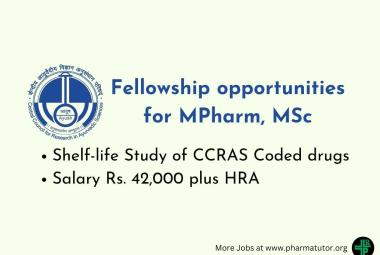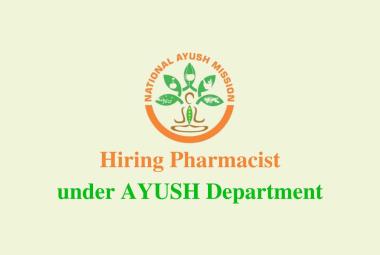 About Author:
About Author:
Kambham Venkateswarlu
Final Year Graduate Student
Sri Lakshmi Narasimha College of Pharmacy,
Palluru, Chottoor-517132, Andhra Pradesh, India.
k.v.reddy9441701016@gmail.com
ABSTRACT:
Malaria is an infectious disease caused by a parasite (plasmodium) which is transmitted from human by the bite of infected female Anopheles mosquitoes. Four species of the parasite plasmodium are responsible for Malaria in humans: Plasmodium vivax, Plasmodium malariae, Plasmodium ovale, Plasmodium falciparum.
This disease cause a nearly 300 to 400 million clinical episodes of malaria occur worldwide, out of which 1.5 to 2 million die every year. So this is also a most dangerous disease in children. This review reveals the treatment of malaria in paediatrics.
[adsense:336x280:8701650588]
Reference Id: PHARMATUTOR-ART-1623
I.INTRODUCTION:
Malaria is an infectious disease caused by a parasite (plasmodium) which is transmitted from human by the bite of infected female Anopheles mosquitoes.
II.DESCRIPTION OF MALARIA:
Four species of the parasite plasmodium are responsible for Malaria in humans:
* Plasmodium vivax
* Plasmodium malariae
* Plasmodium ovale
* Plasmodium falciparum
- Over 90 million cases of malaria occur each year.
- Advance in the chemotherapy of malaria was delayed until 1880, when Laveran finally identified the parasites in the blood.
- In India 60% of infections are due to P.vivax.
- In India 40% of infections are due to P.falciparum.
- In India 1% of infections are due to P.malariae.
- P.ovale: It is rare parasite of man, mostly confined to tropical Africa.
III.HISTORY:
The female anopheline mosquitoes ability or competence to transmit malaria governed by a complex interaction of environment, behavioural and biological features including vector density, blood meal preference, feeding and resting habits, flight range, longevity, humidity and temperature. Hence, agricultural development, irrigation, available of drugs and pesticides, knowledge of and attitude to the disease, nocturnal, etc., will all play a part in the local epidemiology of the disease.
IV.ETIOLOGY:
Malaria in man is mainly caused by above mentioned 4 distinct species.
[adsense:468x15:2204050025]
Differentiating features of P.vivax and P.falciparum malaria:
|
S.NO |
P.vivax |
P.falciparum |
|
1 |
It is relatively benign and rarely produces serious complications of death. |
It is associated with serious complications eg. Cerebral malaria, jaundice, renal failure including high mortality |
|
2 |
In this type of malaria less than 1% of RBCs are parasitized. |
In this the number of RBCs involved may go up to 35% |
V.TYPES OF MALARIA:
According to severity of illness, malaria can be broadly classified into two types
1. Benign
2. Malignant
1. Benign Malaria:
* Relatively milder disease.
* Generally caused by P.vivax.
* Seldom fatal.
* The chance of involvement of other organs is much less.
* Also referred to as Uncomplicated Malaria.
2. Malignant Malaria:
* Severe.
* Rapid downhill course.
* Caused mainly by P.falciparum and rarely by P.vivax.
* Poor prognosis.
* Now a days “severe malaria” are used more frequently to describe this type of malaria.
VI.SIGNS AND SYMPTOMS:
* Moderate to severe shaking chills.
* High fever
* Profuse sweating as body temperature falls
* General feeling of unease and discomfort (malaise)
* Headache
* Nausea
* Vomiting
* Diarrhoea
VII.DIAGNOSIS:
Diagnosis of malaria involves identification of malaria parasite or its antigens/products in the blood of the patient. Although this seems simple, the efficiency of the diagnosis is subject to many factors. The different forms of the four malaria species; the different stages of the erythrocytic schizogony; the endemicity of different species; the population movement; the inert-relation between the levels of transmission, immunity, parasitemia, and the symptoms; the problems of recurrent malaria, drug resistance, persisting viable or non-viable parasitemia and sequestration of the parasite in the deeper tissues; and the use of chemoprophylaxix or even presumptive treatment on the basis of clinical diagnosis can all have a bearing on the identification and interpretation of malaria parasitemia on a diagnostic test.
The diagnosis of malaria is confirmed by blood tests and can be divided into microscopic and non-microscopic tests.
Microscopic Tests:
These tests involves staining and direct visualization of the parasite under the microscope
1. Peripheral Smear Study
2. Quantitative Buffy Coat (QBC) Test
NOW YOU CAN ALSO PUBLISH YOUR ARTICLE ONLINE.
SUBMIT YOUR ARTICLE/PROJECT AT articles@pharmatutor.org
Subscribe to Pharmatutor Alerts by Email
FIND OUT MORE ARTICLES AT OUR DATABASE
VIII.TREATMENT:
Management of Uncomplicated Chloroquine Sensitive P.Falciparum Malaria In Children:
|
Start with Chlorquine |
Follow up with ( to check spread) |
||||
|
Chloroquine Suspension |
Primaquine Tablet |
||||
|
1 st Option: ( Pharmacokinetically superior option) Day 1:10 mg (base) / kg followed by 5 mg (base) kg 6-8 hrs later. Day 2 & 3: 5 mg (base) / kg in a single dose on each day. Total dose : 25 mg (base) / kg |
Children < 1 year : Not Recommended
Children over 1 year : |
||||
|
2 nd Option: Practical Alternative |
|||||
|
Weight |
Age |
Dosage Schedule |
|||
|
|
|
Day 1 |
Day 2 |
Day 3 |
|
|
5-10 kg |
Up to 11 months |
5-10 ml |
5-10 ml |
5 ml |
|
|
11-14 kg |
1-2 yrs |
15 ml |
15 ml |
5 ml |
|
|
15-18 kg |
3-4 yrs |
20 ml |
20 ml |
5 ml |
|
|
19-24 kg |
5-7 yrs |
25 ml |
25 ml |
10 ml |
|
|
Note: Chloroquine doses in terms of bases. Reference: The Use of Antimalarial Drugs: Report of WHO Informal Consultation 13th-17th Nov, 2000. |
|||||
Management of Uncomplicated Chloroquine Resistance P.falciparum Malaria in Children:
|
Start with Quinine & follow up with Primaquine Tablet (to check spread) (1st line) |
(Or) Recommended β Arteether Inj |
|
|
1 st Line Theory |
2 nd Line Theory |
|
|
Quinine |
Primaquine |
β Arteether |
|
Suspension (150 mg / 5ml) 10mg / kg every 8 hours for 7-10 days |
Children < 1 year: not recommended children over 1 year: Primaquine Tab 0.5-0.75 mg / kg in a single dose |
3 mg / kg body weight/ day by I.M.Injection over a period of 3 days i.e. β Arteether Inj. |
|
Note: Quinine doses are in terms of salt Reference: The Use of Antimalarial Drugs: Report of WHO Informal Consultation 13th-17th Nov, 2000. |
||
Management of Uncomplicated P.vivax Malaria in Children:
|
Start with Chloroquine |
Follow up with ( to check spread) |
||||
|
Chloroquine Suspension |
Primaquine Tablet |
||||
|
1 st Option: ( Pharmacokinetically superior option) Day 1:10 mg (base) / kg followed by 5 mg (base) kg 6-8 hrs later. Day 2 & 3: 5 mg (base) / kg in a single dose on each day. Total dose : 25 mg (base) / kg |
Children < 1 year : Not Recommended. Children over 1 year : |
||||
|
2 nd Option: Practical Alternative
|
|||||
|
Weight |
Age |
Dosage Schedule |
|||
|
|
|
Day 1 |
Day 2 |
Day 3 |
|
|
5-10 kg |
Up to 11 months |
5-10 ml |
5-10 ml |
5 ml |
|
|
11-14 kg |
1-2 yrs |
15 ml |
15 ml |
5 ml
|
|
|
15-18 kg |
3-4 yrs |
20 ml |
20 ml |
5 ml |
|
|
19-24 kg |
5-7 yrs |
25 ml |
25 ml |
10 ml |
|
|
Note: Chloroquine doses in terms of bases. Reference: The Use of Antimalarial Drugs: Report of WHO Informal Consultation 13th-17th Nov, 2000. |
|||||
Management of Uncomplicated Mixed Malaria in Children:
|
Start with Chlorquine + Sulphadoxine + Pyrimethamine
|
Follow up with Primaquine ( to prevent Relapse & to check spread) |
|||||||
|
Chloroquine Suspension |
Sulphadoxine + Pyrimethamine |
Primaquine Tablet |
||||||
|
1 st Option: ( Pharmacokinetically superior option) Day 1:10 mg (base) / kg followed by 5 mg (base) kg 6-8 hrs later. Day 2 & 3: 5 mg (base) / kg in a single dose on each day. Total dose : 25 mg (base) / kg |
|
Children < 1 year : Not Recommended
Children over 1 year : Primaquine 0.5mg – 0.75 mg / kg in single dose |
||||||
|
2 nd Option: Practical Alternative |
Weight |
Age |
Dosage Schedule |
|||||
|
Weight |
Age |
Dosage Schedule |
||||||
|
|
|
Day 1 |
Day 2 |
Day 3 |
|
|
|
|
|
5-10 kg |
Up to 11 months |
5-10 ml |
5-10 ml |
5 ml |
5-10 kg |
2-11 months |
5 ml |
|
|
11-14 kg |
1-2 yrs |
15 ml |
15 ml |
5 ml |
11-14 kg |
1-2 yrs |
7.5 ml |
|
|
15-18 kg |
3-4 yrs |
20 ml |
20 ml |
5 ml |
15-18 kg |
3-4 yrs |
10 ml |
|
|
19-24 kg |
5-7 yrs |
25 ml |
25 ml |
10 ml |
19-24 kg |
5-7 yrs |
15 ml |
|
|
Note: Chloroquine doses in terms of bases. Reference: The Use of Antimalarial Drugs: Report of WHO Informal Consultation 13th-17th Nov, 2000. |
||||||||
NOW YOU CAN ALSO PUBLISH YOUR ARTICLE ONLINE.
SUBMIT YOUR ARTICLE/PROJECT AT articles@pharmatutor.org
Subscribe to Pharmatutor Alerts by Email
FIND OUT MORE ARTICLES AT OUR DATABASE
Management of Chloroquine Sensitive Complicated Malaria in Children:
|
Start with Chloroquine injection & follow up with Primaquine Tablet (to check spread) |
||
|
Chloroquine injection |
Primaquine Tablet |
|
|
Children
|
Children
|
|
|
By very slow I.V infusion* Initial Dose Followed by |
By I.M or S.C* (when I.V infusion is not possible) 2.5 mg / kg every 4 hrs OR 3.5 mg / kg every 6 hrs. Until a total dose of 25 mg / kg has been given |
Children < 1 year : Not Recommended Children over 1 year : Primaquine 0.5mg – 0.75 mg / kg in single dose. |
|
Note: chloroquine doses are in terms of bases. *Till the patient can take oral Chloroquine. Reference: The Use of Antimalarial Drugs: Report of WHO Informal Consultation 13th-17th Nov, 2000. |
||
Management of Chloroquine Resistant Complicated Malaria in Children:
|
Start with Quinine & follow up with Primaquine Tablet (to check spread) (OR) Recommended β Arteether Inj |
||
|
1 st Line Theory |
2 nd Line Theory |
|
|
Quinine Injection |
Primaquine Tablet |
β Arteether Inj |
|
Loading dose 20 mg /kg by I.V infusion over 4 hrs
Followed by* 10 mg / kg every 12 hrs for 7-10 days |
Children < 1 year: not recommended |
3 mg / kg body weight/ day by I.M.Injection over a period of 3 days i.e. β Arteether Inj. |
|
Note: Quinine doses are in terms of salt. *Till the patient can take oral quinine. Reference: The Use of Antimalarial Drugs: Report of WHO Informal Consultation 13th-17th Nov, 2000. |
||
VIII.PREVENTION:
Prevention is based on avoiding exposure to mosquitoes and aggressively treating people who are infected. Malaria control programs in many parts of the world are underfunded and ineffective. If you are to an area where malaria is common, take anti malarial drugs exactly as prescribed by your physician and prevent mosquito bites by
* Closing windows at night if possible.
* Sleeping with a mosquito net, preferably one containing an insecticide, with the edges tucked under the mattress.
* Covering up your body as much as possible with clothing.
* Applying an insect repellent to areas of the body not covered by clothing.
IX.CONCLUSION:
This review gives a brief conclusion about disease prevalence, already discovered drugs. It further helps to carry out further research in prevention and eradication of malaria.
X.REFERENCES:
1. MALARIA: A Major Killer Disease in India; PhaRmeD TRADE NEWS; SEPTEMBER, 2006.
2. CLINICAL PHARMACOLOGY by D.R.Laurence,P.N.Bennet, M.J.Brown; eighth edition.
3. Clinical presentations of severe and complicated malaria in India by SK.Mishra, S. Mohanty; Journal, Indian Academy of Clinical Medicine Vol.2, No.3 July September.
4. Integrated management of childhood illness; Reference library of Selected Materials, WHO, Department of Child and Adolescent Health and Development: Unicef.
5. Basic and clinicaql pharmacology by Betram G.Katzung, Seventh edition, page.838.
6. The Use of Antimalarial Drugs: Report of WHO Informal Consultation 13th-17th Nov, 2000.
7. health scout.com/ ency/ 68/347/ main.htm/
8. malariasite.com/malaria/Evolution.htm
9. malariasite.com/malaria/Diagnosis of malaria.htm
10. malariasite.com/malaria/Life of plasmodium.htm
NOW YOU CAN ALSO PUBLISH YOUR ARTICLE ONLINE.
SUBMIT YOUR ARTICLE/PROJECT AT articles@pharmatutor.org
Subscribe to Pharmatutor Alerts by Email
FIND OUT MORE ARTICLES AT OUR DATABASE









